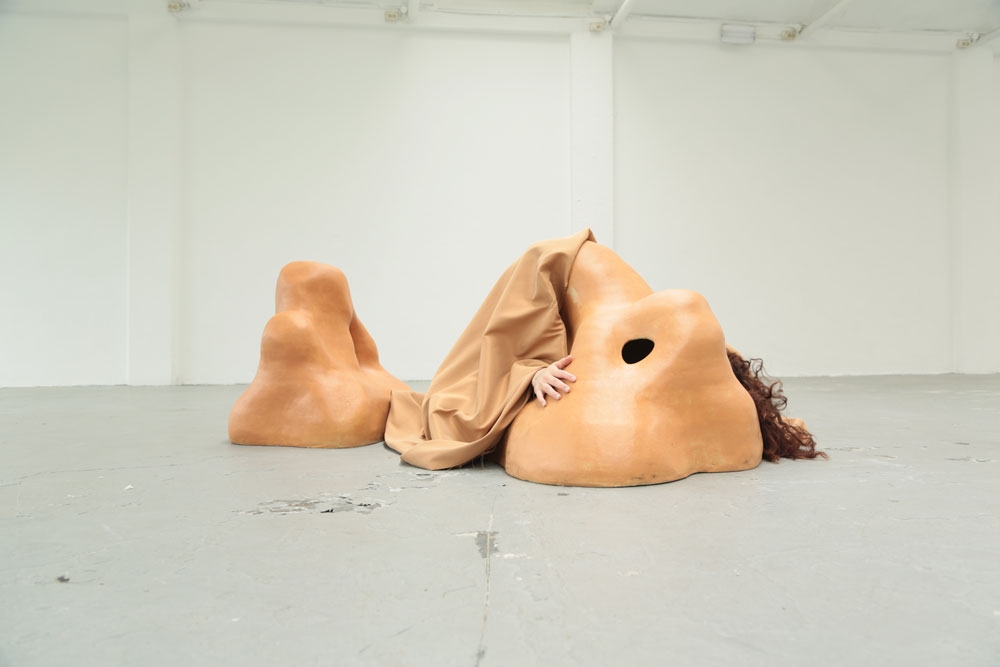paranymph (slush puppies)
2016
Abject Shell
Ceramic, fabrics
paranymph (slush puppies)
June 3 - 14, 2016
Studio for Immediate Spaces
De Fabriek, Eindhoven
Abjection For Julia Kristeva, the intolerable, or abject, body leaks wastes and fluids, in violation of the desire and hope for the “clean and proper” body, thus making the boundaries and limitations of our selfhood ambiguous, and indicating our physical wasting and ultimate death. In her view, human and animal wastes such as feces, urine, vomit, tears, and saliva are repulsive because they test the notion of the self/other split upon which subjectivity depends.
The skin of milk, for instance, puts one in mind of the thin skin membrane that defines the borders and the limits of the physical body; because human skin provides only a relatively flimsy and easily assaulted partition between the body’s inside and the world outside, this milky reminder disturbs our distinctions between outside and inside, I and other, moving us to retch, and want to vomit in an acute attempt to expel the scum from our being (Kristeva, Powers of Horror 2–3).
As Elizabeth Grosz observes, “Abjection is a sickness at one’s own body, at the body beyond that ‘clean and proper’ thing, the body of the subject. Abjection is the result of recognizing that the body is more than, in excess of, the ‘clean and proper’” (78). The abject body repeatedly violates its own borders, and disrupts the wish for physical self-control and social propriety. We disavow our excretory bodies because they are signs of disorder, reminders of the body’s ambiguous limits (its leaking from multiple orifices), and of its ultimate death: “Such wastes drop so that I might live, until, from loss to loss, nothing remains in me and my entire body falls beyond the limit—cadere, cadaver” (Kristeva, Powers 3). © 2004 State University of New York Press, Albany
 Video documentation︎︎︎︎
Video documentation︎︎︎︎